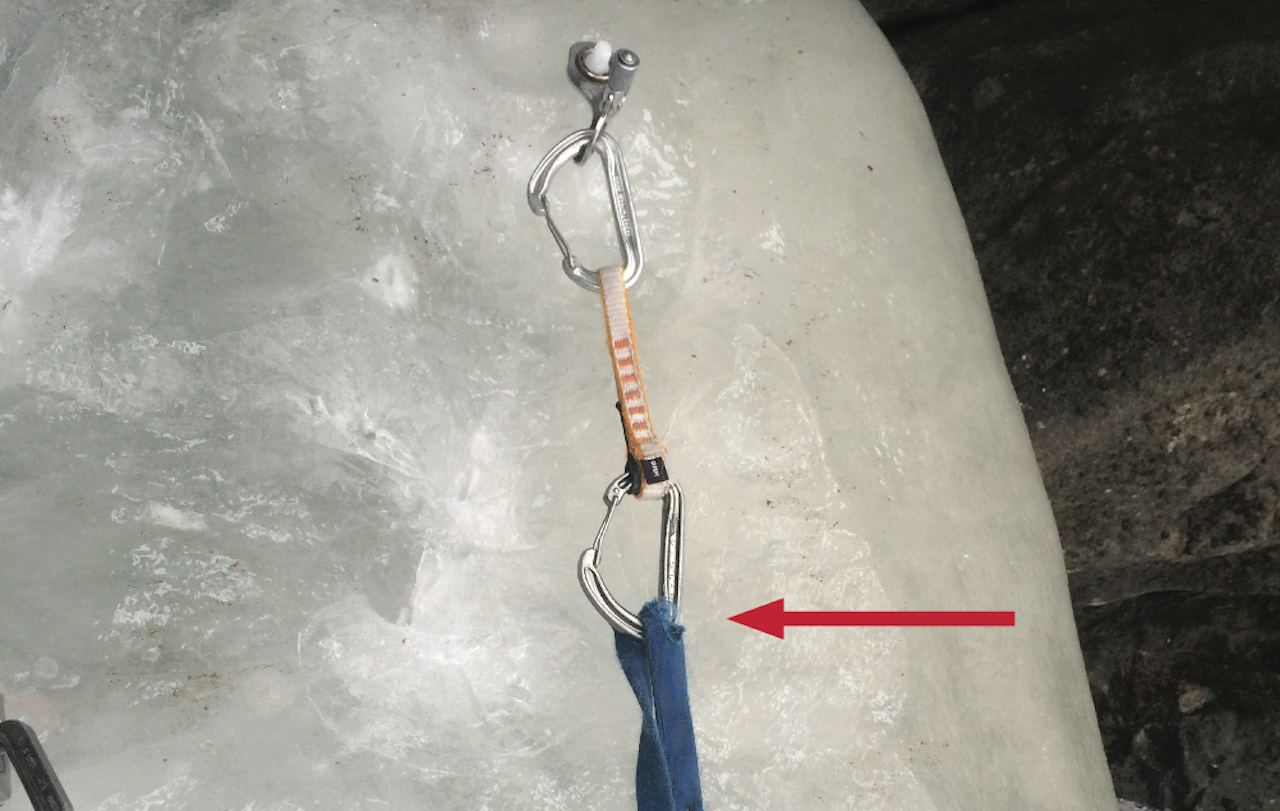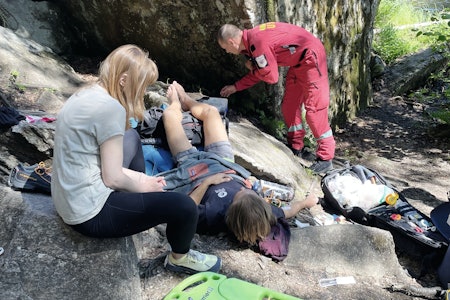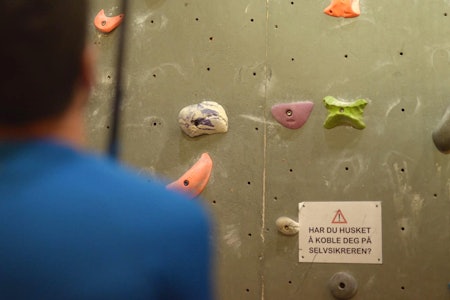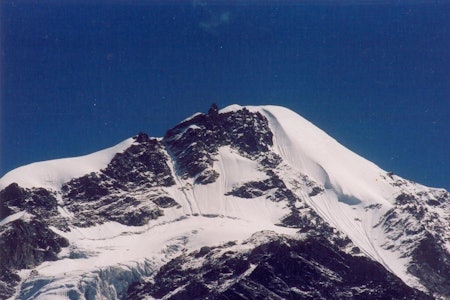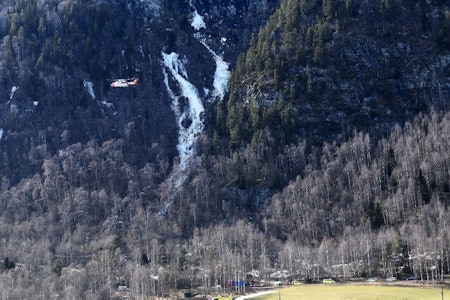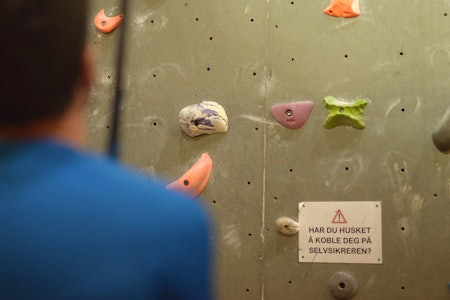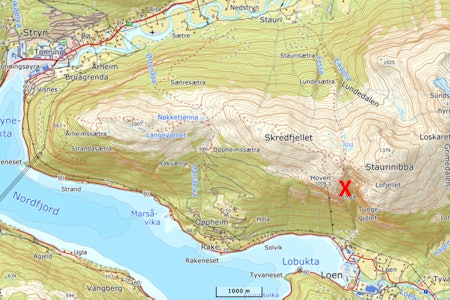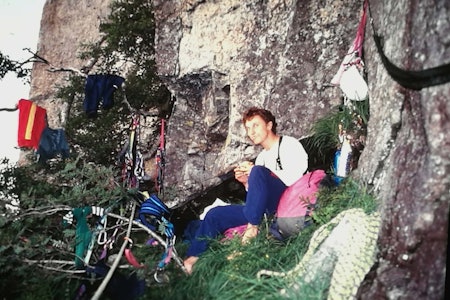Til ulykkesrapporten etter forrige helgs tragiske dødsulykke på Lipton, har nå sikkerhetskomiteen i Klatreforbundet kommet med et tillegg, også kalt «addendum» (se under). I dette går det fram at den forulykkede klatreren etter all sannsynlighet hadde sikret i en isskrue til, over den som tok fallet. Man tror at denne var festet til den fallende isen, som klatrer dermed ble truffet av, all den tid isskruen var klippet inn i tauet.
Bakgrunnen for at man kan anta dette, er at slyngen i den skruen som holdt så og si var revet over. Den må derfor ha tatt en stor belastning i fallet.
Les også: Ulykkesrapport etter dødsulykken på Rjukan.
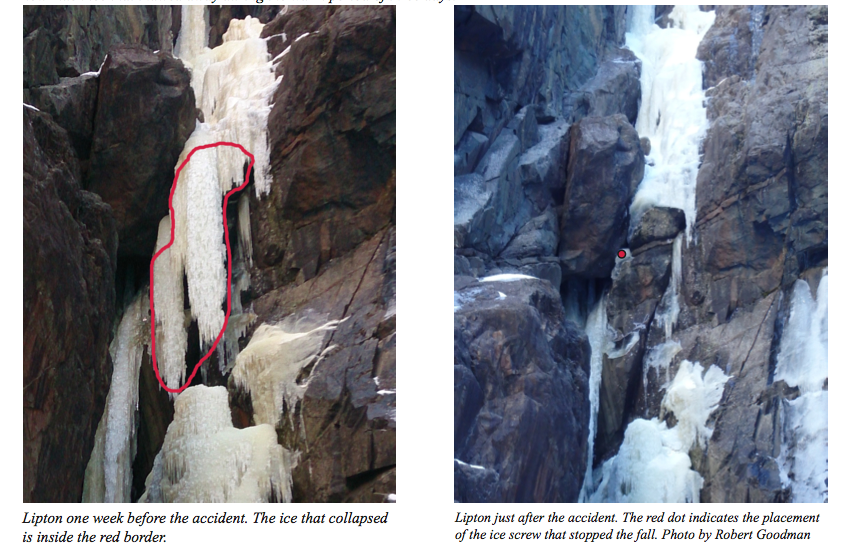
Addendum
One week after the fatal accident, and after the publishing of the original report from the accident, two climbers made a rappel down Lipton in search for answers to what could have caused the accident. Their findings shed additional light on the course of events that took place during the accident. Their findings, and some conclusions based upon this is presented in this addendum.
They found the ice screw that stopped the fall still in place where the climber originally put it. A dyneema quickdraw (orange) was clipped into the screw, and this was extended by an open nylon sling (blue). This is usually done here to prevent the rope from jamming and getting stuck in the rock. While the screw and the carabiners are undamaged, the nylon sling shows extensive damage. Upon closer examination, it turns out that the nylon sling has almost ripped apart in the upper end. Only 25% of the weaving is left where the sling was damaged.
While there was no clear conclusion in the initial report of whether the falling ice was attached to the climber’s last ice screw or not, the new information gives overwhelming evidence in support of a conclusion that the screw was indeed attached to the large chunk of ice that fell down. There is no likely scenario in which the sling could have sustained this kind of damage from friction against rock or falling ice given its placement. The only likely explanation left is that the forces in play has been enormous, and that the sling has been exposed to forces of approximately 22 kN (weight of 2200 kg). The massive amount of ice that fell down must have exerted a strong pull in the rope in order to create this kind of force. The equipment is not built to handle the forces of a mass of several hundred kilos in a lead fall.
Given the scenario with a chunk of falling ice weighing several hundred kilos attached to the rope via an ice screw and a quickdraw, the climber will stand no chance. The climber will be pulled off the ice with enormous forces. Since he is attached to the end of the rope which pulls him down in addition to gravity, his acceleration will be larger than that of the falling ice. He will come underneath the ice and be smashed by it as the ice hits the climber’s end of the rope.
We hope the report and the addendum can help us to understand better what happened in the accident, that we can all learn a bit and hopefully avoid similar accidents in the future.
Take care and stay safe!
Les også: Overlevde mirakuløst fall på 25 meter – rett i bakken.
